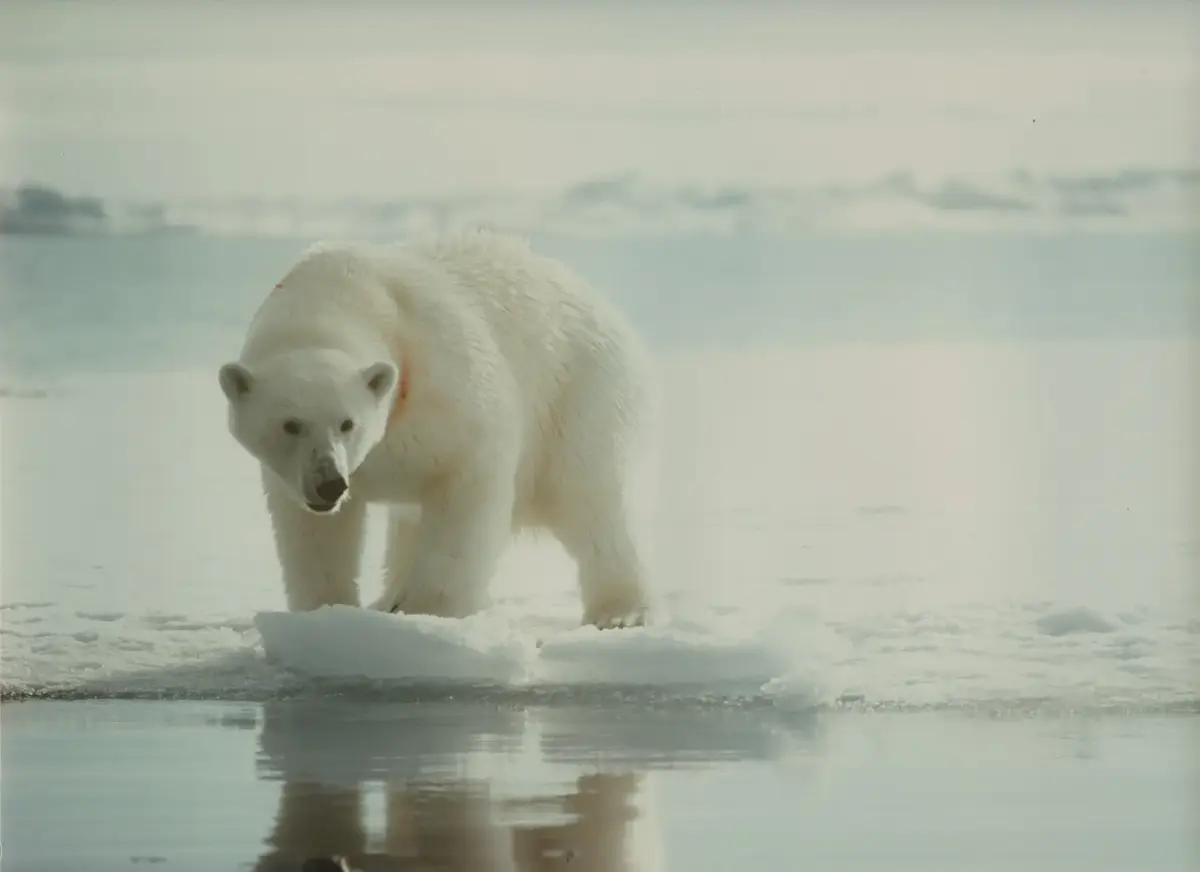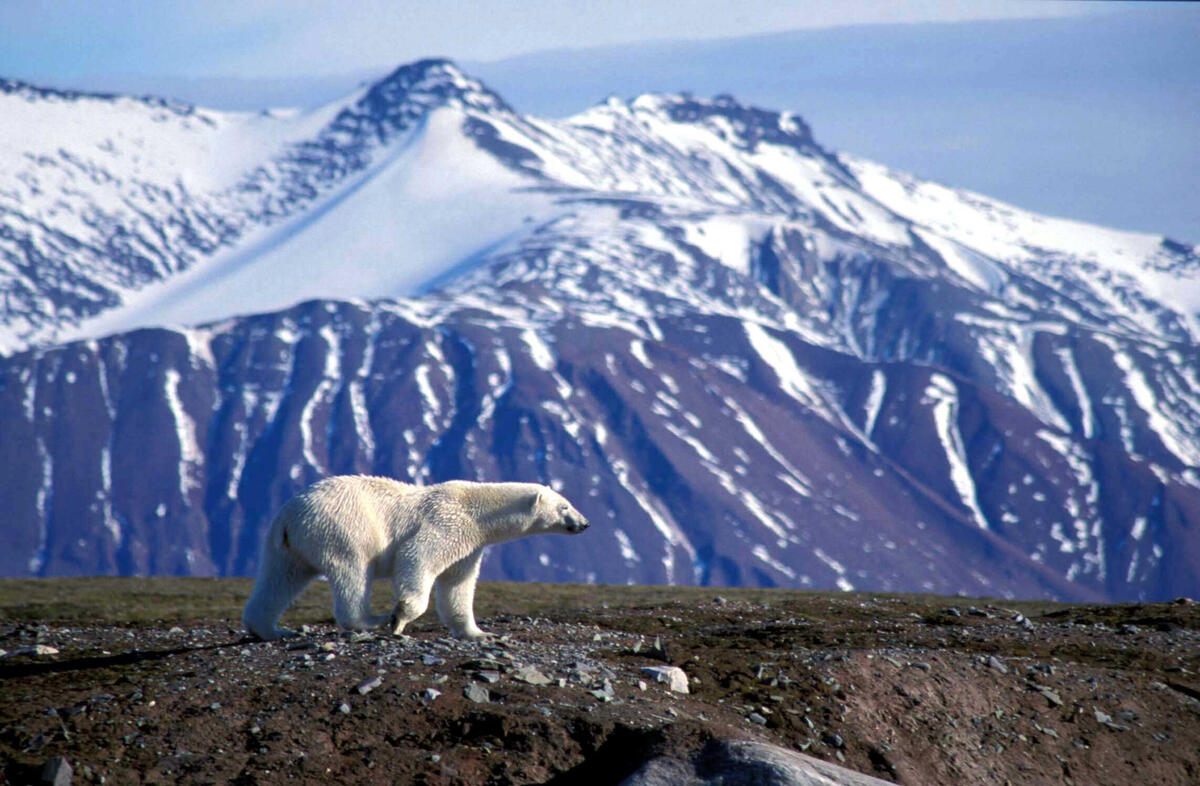Sea ice is where the polar bear hunts seals, its most important food.
Polar bears have very sharp teeth and claws, useful for capturing and eating a seal. Its sense of smell is so acute that it can detect seals through snow from far away. Its magnificent fur and a thick layer of fat allow the bear to live outdoors in the harsh Arctic climate and swim great distances in icy water.
A large male can weigh over 500 kilogrammes. Females are only half as big. For such a large animal, the polar bear is quite fast; it can run more than 30 km/h for short distances.
- 1/1
Polar bear in summer. Photo: Svalbard Museum
A female eats nothing for nearly half a year when expecting and nursing cubs. For this reason, it is crucial for her to have substantial fat stores. She uses this fat to make milk that is more nutrient-dense than the cream we buy at the grocery store.
Polar bears usually have two cubs, who stay with their mother until they are about two years old. They are born in a den of snow around Christmastime. They are tiny at birth, weighing only about half a kilogramme.
The cubs grow quickly, and by the time they leave the den in April, they are as big as dogs, weighing about 10 kg.

